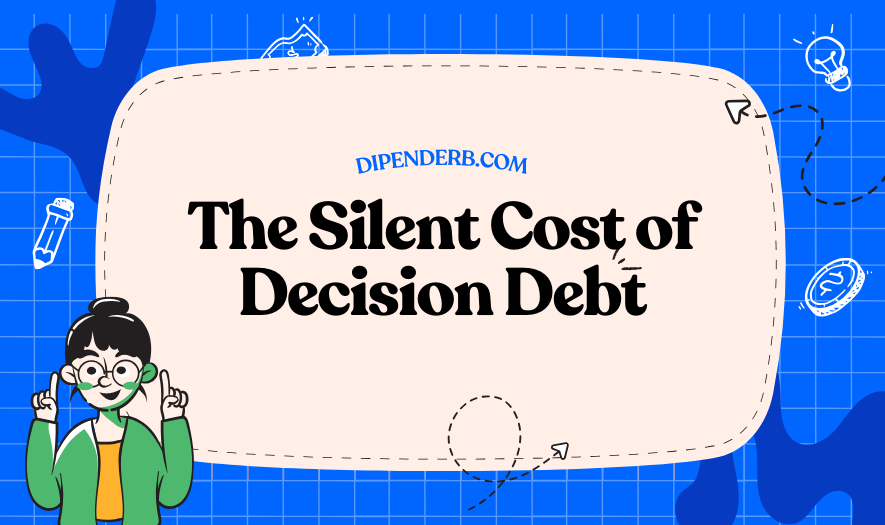The Silent Cost of Decision Debt
We talk a lot about technical debt. But most product teams quietly accumulate something more dangerous — decision debt.
It’s the backlog of unmade, unclear, or postponed decisions that keep compounding until momentum stalls. And it rarely shows up on dashboards.
I first started noticing it in teams that looked busy, but weren’t really moving. JIRA was full. Sprint velocity seemed healthy. But meaningful outcomes were absent. Everything took longer. Scope kept shifting. Teams got caught in meetings debating the same unresolved points. That’s when it clicked — we weren’t slow because of poor execution. We were dragging invisible weight: a debt of unmade decisions.
What is decision debt?
It's what builds up when:
We avoid making tough calls
We push decisions downstream to buy time
We keep options open too long
We leave open questions in PRDs, roadmaps, or discussions
We delay clarity in the name of collaboration or consensus
The problem? Every unclear decision becomes a hidden tax on the system. Engineers second-guess requirements. Designers hedge on edge cases. PMs run extra meetings just to clarify what’s actually being built.
And like all debt, it compounds — quietly and consistently. One unclear tradeoff creates five clarifications, ten Slack threads, and a dozen downstream adjustments.
Why it’s so common
Startups especially fall into this because we want to stay flexible. We prize speed, adaptability, and collaboration. But clarity is what creates speed. Without it, flexibility turns to chaos.
What’s worse — many PMs are rewarded for delivering fast, not deciding well. So they avoid committing. They default to documenting "options" instead of calling the shot. In the short term, it feels safer. In the long term, it erodes trust and velocity.
How to pay it down
You don’t need a perfect process. You just need a culture that values decision velocity.
Here’s what I try to apply:
Make small, irreversible decisions fast. Don’t overthink low-risk calls.
For big bets, frame the decision clearly: what are we choosing, why now, and what are we saying no to?
If something’s blocked, ask: “What decision haven’t we made yet?”
In PRDs or team syncs, make tradeoffs explicit — ambiguity breeds debt.
When revisiting past choices, be honest: did we dodge this earlier?
The best PMs aren’t just great at managing stakeholders or shipping features. They’re great at creating clarity. That means naming tradeoffs, committing when needed, and revisiting old debt before it slows the team down.


